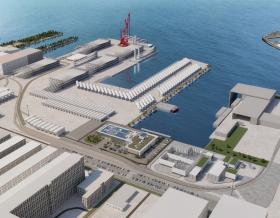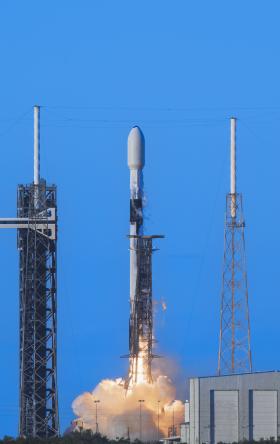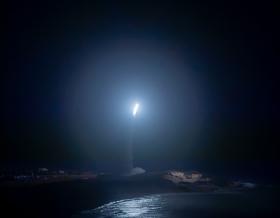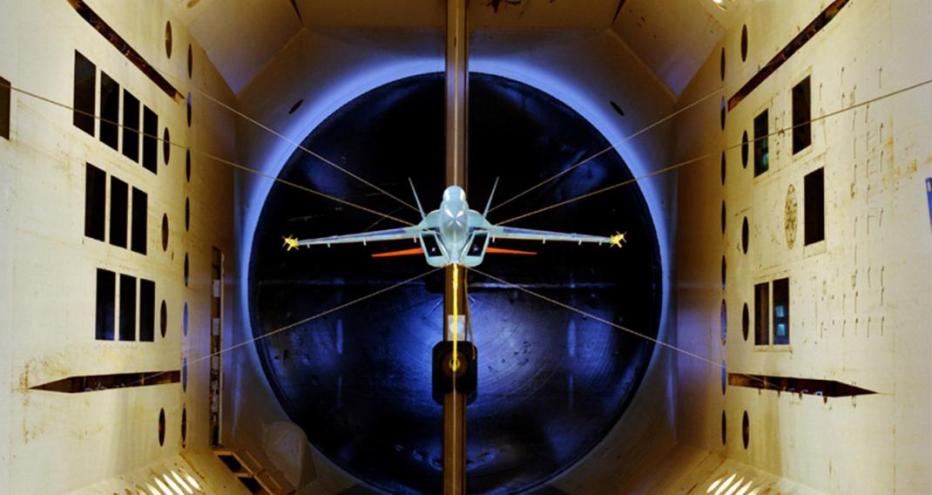




At Jacobs, we're challenging today to reinvent tomorrow by solving the world's most critical problems for thriving cities, resilient environments, mission-critical outcomes, operational advancement, scientific discovery and cutting-edge manufacturing, turning abstract ideas into realities that transform the world for good. With approximately $16 billion in annual revenue and a talent force of more than 60,000, Jacobs provides a full spectrum of professional services including consulting, technical, scientific and project delivery for the government and private sector.



For more than 70 years, our teams have provided integrated solutions to help solve the most complex and hazardous challenges of space exploration. We invent by imagining what’s possible.



A curated selection of some of the top-listened to and trending podcast episodes from our popular If/When podcast series, which has over 6M downloads to date.


Sit down with our visionary team of thinkers, dreamers and doers to see what a day in the life is like.



As our clients navigate the digital transformation and growing cyber risks, we have positioned ourselves at the forefront of this growth, adding digital capabilities, products and tools to serve a growing set of customers.



Together with our visionary partner, PA Consulting, we're establishing our position in high end advisory services, creating a springboard to expand in high value offerings beyond the core.



The only certainty about the future is uncertainty. Resilience is an attribute of a smarter planet, and requires planning and adapting ahead of potential threats. We help our clients survive, recover, adapt and thrive.



Jacobs. A world where you can.



As a purpose-led company, we know we have a pivotal role to play in addressing the climate emergency. We consider this not only good business, but our duty to channel our technology-enabled expertise and capabilities toward benefitting people and the planet.



For more than 30 years, Jacobs has been responsible for planning and implementing Lead and Copper Rule-related strategies which protect millions of people in the U.S. and Canada. Our work includes enhanced water quality monitoring strategies, sampling plan development, harvested pipe-scale analysis, lead service line inventories and replacement plans, corrosion control studies and the incorporation of equity and environmental justice considerations into compliance programs.



Jacobs is working to help clients across the United States secure federal funding for projects that make our cities and communities more connected and sustainable. Working hand-in-hand with clients from coast to coast and everywhere in between, Jacobs develops bold, innovative solutions to address the nation’s toughest challenges.



Now more than ever, we appreciate the hard work, sacrifice and dedication of the medical profession in ensuring the health and safety of our communities.



Together, we are stronger. Together, we can transform the future.



We work in partnership, delivering some of the most challenging, diverse and innovative projects and programs globally across multiple sectors. We integrate complex interfaces across planning, procurement and delivery to help unlock better social, environmental and economic outcomes from mega and giga projects.



We’ve provided design-build services to the water sector for over 25 years and delivered more than 150 projects. We offer fully integrated design-build and design-build-operate capabilities to tackle the most complex water challenges and work in close collaboration with our clients.



As climate change threatens water security around the world, more communities are turning to water reuse as a resilient water supply solution and embracing the OneWater principle that all water has value. Jacobs has been supporting clients with water reuse programs for decades, beginning with the first applications of advanced wastewater treatment technologies in the 1960s. We provide our clients with a full range of services, from water reuse feasibility studies to design, construction and operations.



Jacobs’ deep experience with advanced technology systems and our wide-ranging program support capabilities make us a premier partner at locations across the world. We deliver the right talent, tools and processes to support and enable our customers’ missions.



The National Air and Space Museum's One World Connected exhibit will tell the story of how flight fostered two momentous changes in everyday life: the ease in making connections across vast distances and a new perspective of Earth as humanity’s home. Below are some stories from Jacobs that also highlight the connections and digital solutions we are making around the world.



Stories that capture our partnerships and innovative impact for a more connected, sustainable world



Studies from Aviva suggest that the best age is 35 and in UnitedHealthcare’s survey of people over the age of 100, most respondents recalled their 30s as the best decade of their lives.
At the NASA Langley Research Center in Virginia however, the more than 43,000 assets in operation at the birthplace of America’s manned space program and home to the nation’s first astronaut corps, are an average of 30-years-old or more, many surpassing their original design life. When assets reach and exceed their useful lives, the risks to their data and to those interfacing with them increase, leaving both safety and investments up to chance.
But what if we showed you how NASA and Jacobs are using intelligent asset management technologies to optimize operations and increase the life of assets at NASA Langley?
asset data acquisition points across 270 facilities
in recorded client cost savings, without corresponding reduction in service levels
“A condition-based maintenance approach emphasizes holistic integration of solutions that span across the full facility lifecycle to manage the challenges of operational and maintenance programs while generating greater value in terms of time and cost savings. At Jacobs, our CBM approach increases our customer’s savings by providing preventive maintenance that identifies potential system failures before they occur, resulting in reduced maintenance action and costs. Planned maintenance and identification of potential catastrophic equipment failures also prevent risks to business partners, clients and staff.”

Steve Arnette
Jacobs Executive Vice President & President, Critical Mission Solutions
Comprised of more than 780 acres, the NASA Langley campus is home to 270 facilities, 220 of which are classified as critical, such as subsonic-to-hypersonic wind tunnels used in aeronautic testing and engineering sensors that will measure the atmospheric conditions and heatshield performance during the Entry Descent and Landing phase of the Mars 2020 mission. Efforts at Langley focus on revolutionary improvements to aviation, expanding understanding of Earth’s atmosphere and developing technology for space exploration.
Driven by shrinking budgets, unplanned downtime, increased maintenance costs and a resource shortage, NASA partnered with Jacobs in 2013 to develop reliability-enhancing maintenance strategies for the Langley Research Center campus. Since coming online, Jacobs has developed a comprehensive strategic plan that includes condition-based management (CBM) asset prioritization; energy management (including SCADA); engineering and architecture of IT systems; sensors, tools and applications; campus-wide wireless network, including solar and micro-energy harvesting; and data storage optimized for the Langley environment.
We developed and operate a 24/7 Integrated Operations Center that provides command and control of f facility operations across more than 116,000 discrete data acquisition points, including temperature sensors, Building Automation System sensors, cameras, CO2 sensors, accelerometers and more.
Our cybersecurity experts ensured the safety and integrity of data transfer and capture and we linked floor plans using Geographic Information Systems (GIS) and attached control drawings to facilitate troubleshooting and quickly identify problem areas. And, we introduced Building Automation, combining 11 disparate systems (primarily HVAC) into a single, integrated system.
In 2018, we signed a contract extension to continue providing facility-related intelligent asset management and operations and engineering support services at Langley throughout 2019, such as design engineering, project management, construction management, configuration management and asset management services for research facilities, wind tunnels, laboratories, test structures and specialty instrumentation.
By implementing our CBM approach, NASA Langley has realized substantially improved system reliability with the avoidance of $12 million in maintenance costs since implementation. Additionally, the campus has averted unplanned downtime on monitored assets for three years running.
NASA Langley Research Center’s asset management and reliability program is now touted as a possible enterprise solution for all of NASA and in 2017, UPTIME Magazine’s ReliabilityWeb® named the program Best Reliability Program of the Year.

Jacobs Engineering Group Inc. was awarded an extension to the Center Maintenance, Operations and Engineering contract at NASA's Langley Research Center in Hampton, Virginia.

Jacobs Engineering Group Inc. (NYSE:JEC) announced that its work with NASA Langley Research Center has been chosen by ReliabilityWeb® to receive the 2017 Best Reliability Program of the Year Award by UPTIME Magazine.